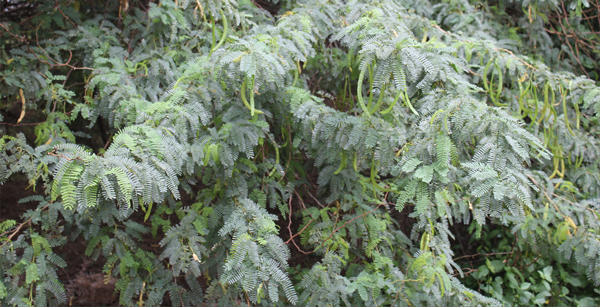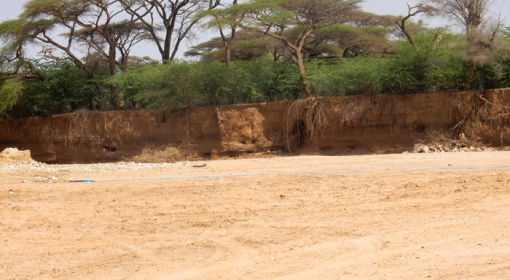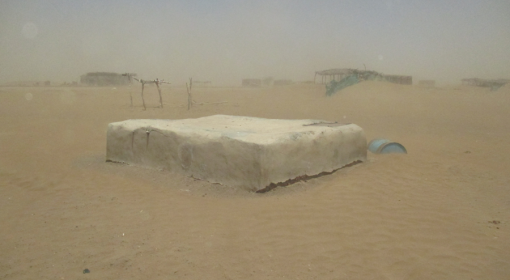posted by Frank van Steenbergen, Abraham Mehari Haile, Abebe Demissie and Francesco Sambalino
November 12, 2012
It has turned large hot dry plains green in the last thirty years – but still it is a major scourge that goes largely unattended: mesquite or under its official botanical name prosopis juliflora.
In the last thirty years this hardy well rooted shrub made its way from Latin America to all parts of the world, covering millions of hectares in for instance India, Pakistan, Yemen, Sudan, Somalia or Ethiopia. In many places it was first introduced in sand dune stabilization projects. However, prosopis has the habit to ‘overstay its welcome’ and expand rapidly and not go away. The area estimated conquered by the invasive species in the last ten years in India, Pakistan, Yemen, Kenya, Sudan and Ethiopia is way above 10 million hectares.
Particularly in areas where there is livestock grazing, prosopis spreads rapidly: the seedpods cling to the animals and are distributed widely. Prosopis germinates easily and once it has settled in an area it is difficult to get rid off it. It takes over the natural vegetation, does not allow undergrowth and hence greatly reduces the grazing value. It also tends to creep into waterways – including dry riverbeds – choking them in the process and causing flood rivers to run wild. The prosopis thorns are poisonous and can even cause blindness.
Prosopis is not only a scourge. It also has some benefits to its credit. Particularly when the plants are not too craggy (as happens in the more arid areas), the wood can be used for charcoal or even timber. The pods attract bees and have a high sugar content. They can serve as animal feed or be processed even into a sweetener. Prosopis juliflora can be used to improve the worst – saline or alkaline – soils. Particularly, when some of its charcoal is added as bio-char, degraded soils get a boost.

On balance however, it is a scourge that is steadily undermining the livelihoods of large populations in some of the most vulnerable dry agricultural and pastoralist areas. By now there are several attempts to control ‘the mesquite tide’ with mixed results:
In Afar in Ethiopia, the production of charcoal from prosopis was very much encouraged. The problem however is that the prosopis charcoal is inferior to the one from acacia for instance. Instead of prosopis charcoal, the acacia was widely processed – accelerating the degradation of the common land. A total ban on charcoal trading was hence re-invoked in several parts of this region.
In the Tihama in Yemen, a number of entrepreneurial farmers have started to plant acacia ehrenbergiania trees. Rather than using natural stands they use these stands effectively as ‘charcoal plantations’ and also make money with side products of the acacia charcoal making. (See publication: “Setting up Acacia plantations by the Spate Irrigation Network).
Again in the Afar lowlands in Ethiopia Farm Africa has worked on eradicating prosopis in a number of ways. First is to uproot the plants and then very rapidly convert the area in an agricultural area or into a well-managed grazing area – so as not to allow a come back. Secondly is to encourage the regulated production of charcoal through a number of co-operatives. Thirdly is to systematically collect the pods and crush them into animal feed – making sure they do not germinate but are turned into an economic asset. (Read more in “Experiences on Prosopis Management Case of Afar Region” by Farm Africa)
In Sudan mechanical and manual uprooting of prosopis has been promoted. The challenge is not the uprooting as such but to ensure the plant does not make a quick comeback. In one irrigation system an all-out ban on livestock was introduced after the area was cleared. This helped to keep the area ‘clean’. Similarly in the Gash system in Sudan land was given to farmers on the condition that it would be taken back if they could not control the emergence of prosopis.
These are all good openings – but far more needs to be done. In the assessment of the Afar eradication program for instance the area under prosopis expands more than 20 times faster than the area that is brought under productive use. Also menaces such as prosopis have not had much attention from research and development community – and this would need to be changed too.{jcomments on}


